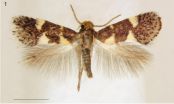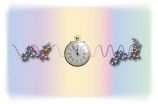No waiting game: Immediate birth control implant more cost-effective
2015-06-09
(Press-News.org) Women who have just given birth are often motivated to prevent a rapid, repeat pregnancy. For those who prefer a contraceptive implant, getting the procedure in the hospital immediately after giving birth is more cost-effective than delaying insertion to a 6-8 week postpartum visit, according to a new study by Yale School of Medicine researchers.
Published online ahead of print in the July issue of Obstetrics & Gynecology, the study compares costs associated with immediate implant insertion with costs of unintended pregnancy. The implant is placed in the arm and can last for three years.
The research team used data from the published literature to model what would happen to a hypothetical group of 1,000 women who want the contraceptive implant after a recent birth. The computer model, referred to as a decision analysis, takes into account all possible outcomes for each step of the process.
The authors found that for every 1,000 women using an implant, immediate contraception is expected to avert 191 unintended pregnancies and save over $1 million in the first year compared with delayed insertion. Cost savings would increase further for the second and third year after insertion. Immediate insertion is cost effective because more women will get the implant compared to a delayed insertion strategy.
"Women can get pregnant again within four weeks of delivering a baby," said lead author Aileen Gariepy, M.D., assistant professor in the Department of Obstetrics, Gynecology & Reproductive Sciences at Yale School of Medicine. "Most women resume sexual activity before their postpartum office visit and therefore will be at risk of pregnancy. And 35% of women do not return for a postpartum visit."
Gariepy said the immediate postpartum period -- after delivery but before discharge home -- is an ideal opportunity for initiating contraceptives because patients are motivated and timing is convenient. But most insurance policies do not provide coverage for contraceptive implant while the mother is still in the hospital.
"Lack of reimbursement is the most significant barrier to providing this highly effective contraceptive," she said. "It's time to stop making women jump through hoops. Providing immediate postpartum insertion helps women and insurance companies. It's a win-win strategy for all."
"This is important information for policy makers and insurance companies," Gariepy added. "Our findings show a strong public health benefit and should aid national organizations advocating for insurance providers to reimburse immediate postpartum insertion."
INFORMATION:
Other authors on the study include Xiao Xu of Yale, and Jennifer Y. Duffy, M.D. of University of California-Irvine.
The study was funded by Yale Clinical and Translational Science Award (CTSA) grant from the National Center for Advancing Translational Sciences (NCATS) at the National Institutes of Health. UL 1 TR000140.
Citation: Obstetrics & Gynecology http://journals.lww.com/greenjournal/toc/publishahead
ELSE PRESS RELEASES FROM THIS DATE:
2015-06-09
BOSTON... June 9, 2015 - Ben-Gurion University of the Negev (BGU) and Harvard University researchers have developed a technique that measures the correlation between air temperature and birth weight. They evaluated the relationship between birth outcomes (focusing on birth weight) and ambient air temperature during pregnancy in Massachusetts between 2000 and 2008.
"We found that exposure to high air temperature during pregnancy increases the risk of lower birth weight and can cause preterm birth," according to Dr. Itai Kloog, a senior lecturer in BGU's Department of Geography ...
2015-06-09
Since 2011 an unknown leafmining moth was observed in table grape orchards and often in large numbers in the Paarl region of the Western Cape (South Africa).
Although the effect of the leafmines on the grape vine itself appears to be limited, collateral damage may be more serious, especially when larvae descend from the vine canopy to form a dense curtain of suspended larvae. A new study published in ZooKeys looks into the morphology and biology of the potential pest.
Although the leafminer had been seen before in South Africa, it proved impossible to find its name.
Entomologist ...
2015-06-09
A team of Tel Aviv University and UCLA astronomers have discovered a remarkable cluster of more than a million young stars are forming in a hot, dusty cloud of molecular gases in a tiny galaxy very near our own.
The star cluster is buried within a massive gas cloud dubbed "Cloud D" in the NGC 5253 dwarf galaxy, and, although it's a billion times brighter than our sun, is barely visible, hidden by its own hot gases and dust. The star cluster contains more than 7,000 massive "O" stars: the most brilliant stars extant, each a million times more luminous than our sun.
"Cloud ...
2015-06-09
Simon Fraser University PhD graduate Maryam Sadeghi will unveil MoleScope™, an innovative hand-held tool that uses a smartphone to monitor skin for signs of cancer, at the World Congress of Dermatology conference in Vancouver June 9-13.
Sadeghi has spent three years transitioning from academic research to her start-up venture, MetaOptima Technology Inc. MoleScope™, the company's inaugural product, which enables people to monitor their moles and skin health, share images with family and healthcare providers and eventually, connect skin specialists with people ...
2015-06-09
Two young researchers working at the MIPT Laboratory of Nanooptics and Plasmonics, Dmitry Fedyanin and Yury Stebunov, have developed an ultracompact highly sensitive nanomechanical sensor for analyzing the chemical composition of substances and detecting biological objects, such as viral disease markers, which appear when the immune system responds to incurable or hard-to-cure diseases, including HIV, hepatitis, herpes, and many others. The sensor will enable doctors to identify tumor markers, whose presence in the body signals the emergence and growth of cancerous tumors.
The ...
2015-06-09
Two years ago, the Immunology of Diabetes Research Group at the Germans Trias Research Institute (at Universitat Autònoma de Barcelona - Campus of International Excellence Sphere) reported a new experimental immunotherapy that prevented the onset of Type 1 Diabetes in mice predisposed to the disease. This work led to more studies with the support of the Spanish Government, Catalan Government and private patrons with a keen interest in it. Thanks to this, the article published today in PLOS ONE describes a new step towards the creation of a vaccine, which in the medium-term ...
2015-06-09
June 9, 2015 - New approaches, based on body mass index (BMI) or other simple measures, are needed to improve assessment of obesity in adolescents with physical disabilities, reports a paper in the American Journal of Physical Medicine & Rehabilitation, the official journal of the Association of Academic Physiatrists. The journal is published by Wolters Kluwer.
Obesity is a major problem in children and adolescents with mobility limitations, but standard assessments tend to underestimate it, according to the new research by Brooks C. Wingo, PhD, of University of Alabama ...
2015-06-09
Nagoya, Japan - A team of chemists and biologists at the Institute of Transformative Bio-Molecules (ITbM), Nagoya University have succeeded in finding new molecules that change the circadian rhythm in mammals by applying synthetic chemistry methods, which makes use of highly selective metal catalysts.
Most living organisms have a biological clock with an approximately 24-hour circadian rhythm, which regulates important body functions such as sleep/wake cycles, hormone secretion, and metabolism. Disruption of the circadian rhythm by genetic mutations and environmental ...
2015-06-09
LOS ANGELES (JUNE 8, 2015) - The witness on the stand says he saw the accused at the scene of the crime. Is he sure? How sure? The jury's verdict could hinge on that level of certainty.
Many decisions we make every day are influenced by our memories and the confidence we have in them. But very little is known about how we decide whether we can trust a memory or not.
A new Cedars-Sinai study provides some of the answers. Researchers have identified a unique set of neurons in the medial temporal lobe, an area of the brain where memories and memory-based decisions are ...
2015-06-09
The use of camera traps -- remote automatic cameras triggered by heat or motion -- has revolutionized wildlife ecology and conservation research. But the large number of images generated through the traps creates the problem of categorizing and analyzing all the images.
For a recent project conducted in the Serengeti National Park, Alexandra Swanson, turned to another relatively new technology -- a citizen science platform. The Snapshot Serengeti project asked non-scientist volunteers to review 1.2 million sets of images. A description of the project, 'Snapshot Serengeti, ...
LAST 30 PRESS RELEASES:
[Press-News.org] No waiting game: Immediate birth control implant more cost-effective


